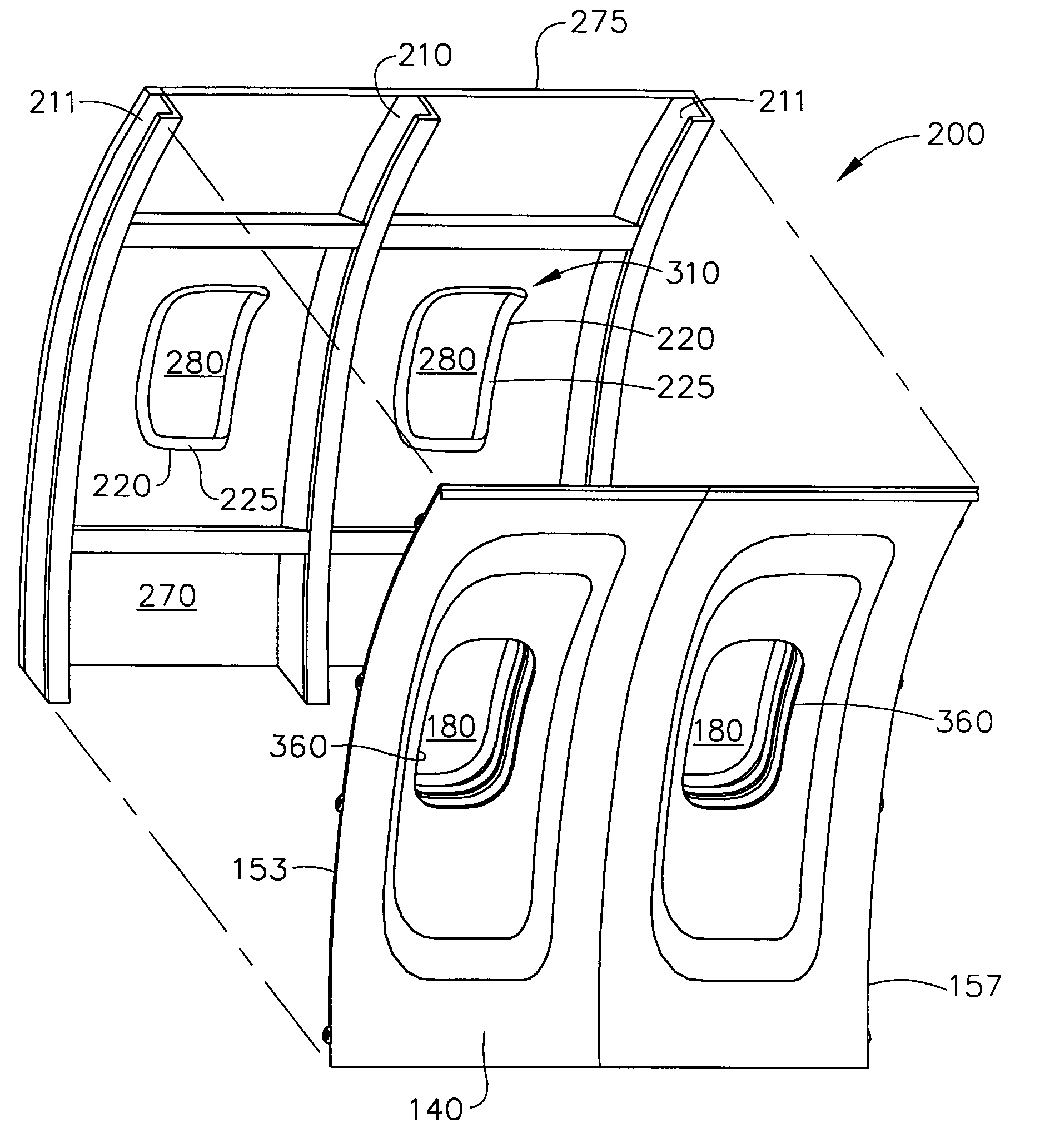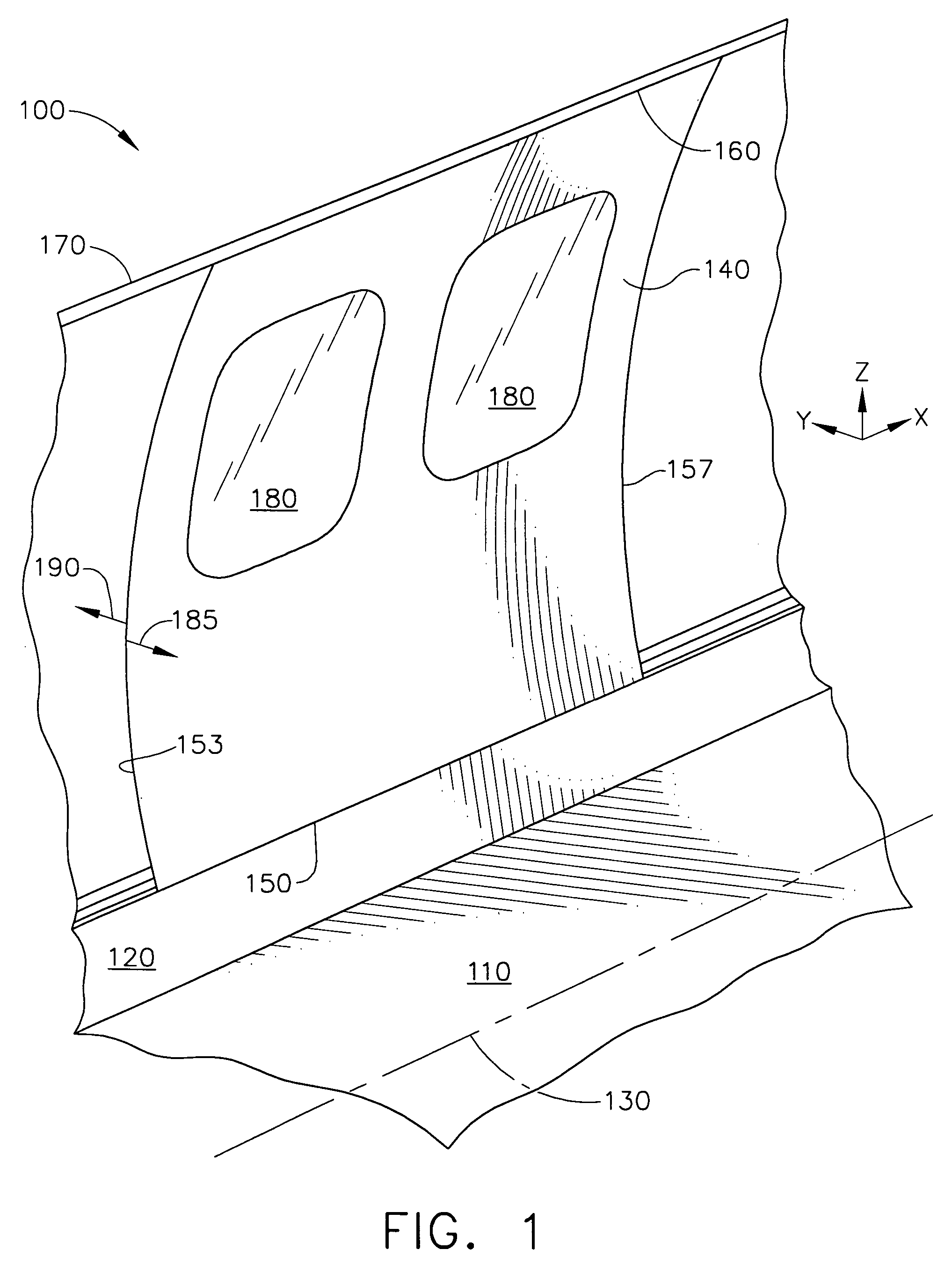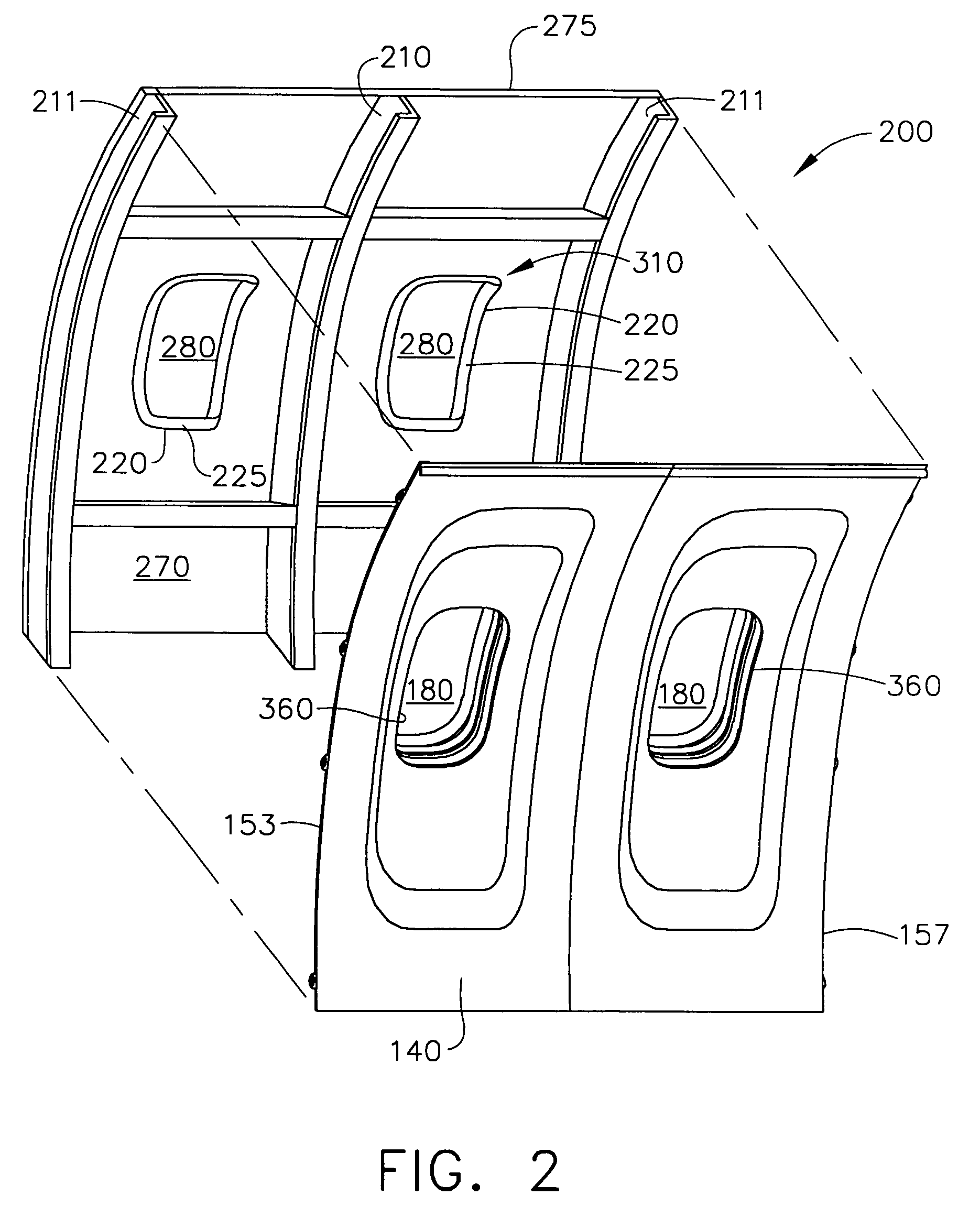Integrated window belt system for aircraft cabins
a window belt and aircraft cabin technology, applied in the field of aircraft interior assemblies, can solve the problems of difficult to properly secure the panels to the aircraft, each component of the inner sidewall system has its own set of design problems, and the installation and removal of sidewall parts are expensive in terms of time and cost, and achieve the effect of convenient installation and rapid installation
- Summary
- Abstract
- Description
- Claims
- Application Information
AI Technical Summary
Benefits of technology
Problems solved by technology
Method used
Image
Examples
Embodiment Construction
[0029]The following detailed description is of the best currently contemplated modes of carrying out the invention. The description is not to be taken in a limiting sense, but is made merely for the purpose of illustrating the general principles of the invention, since the scope of the invention is best defined by the appended claims.
[0030]For ease of understanding the orientation in the drawings, the terms “inside”, “inboard”, and “interior” shall refer a direction oriented from the viewpoint of a person standing within the cabin of the aircraft, and the terms “outside”, “outboard”, and “exterior” shall refer to a direction oriented from the viewpoint of a person outside of the cabin observing the aircraft. Thus, a sidewall trim panel will have an interior side and an exterior side, where the interior side is that surface of the installed panel as seen by a person within the cabin of the aircraft and the exterior side is that surface of the installed panel that is seen by a person ...
PUM
 Login to View More
Login to View More Abstract
Description
Claims
Application Information
 Login to View More
Login to View More - R&D
- Intellectual Property
- Life Sciences
- Materials
- Tech Scout
- Unparalleled Data Quality
- Higher Quality Content
- 60% Fewer Hallucinations
Browse by: Latest US Patents, China's latest patents, Technical Efficacy Thesaurus, Application Domain, Technology Topic, Popular Technical Reports.
© 2025 PatSnap. All rights reserved.Legal|Privacy policy|Modern Slavery Act Transparency Statement|Sitemap|About US| Contact US: help@patsnap.com



